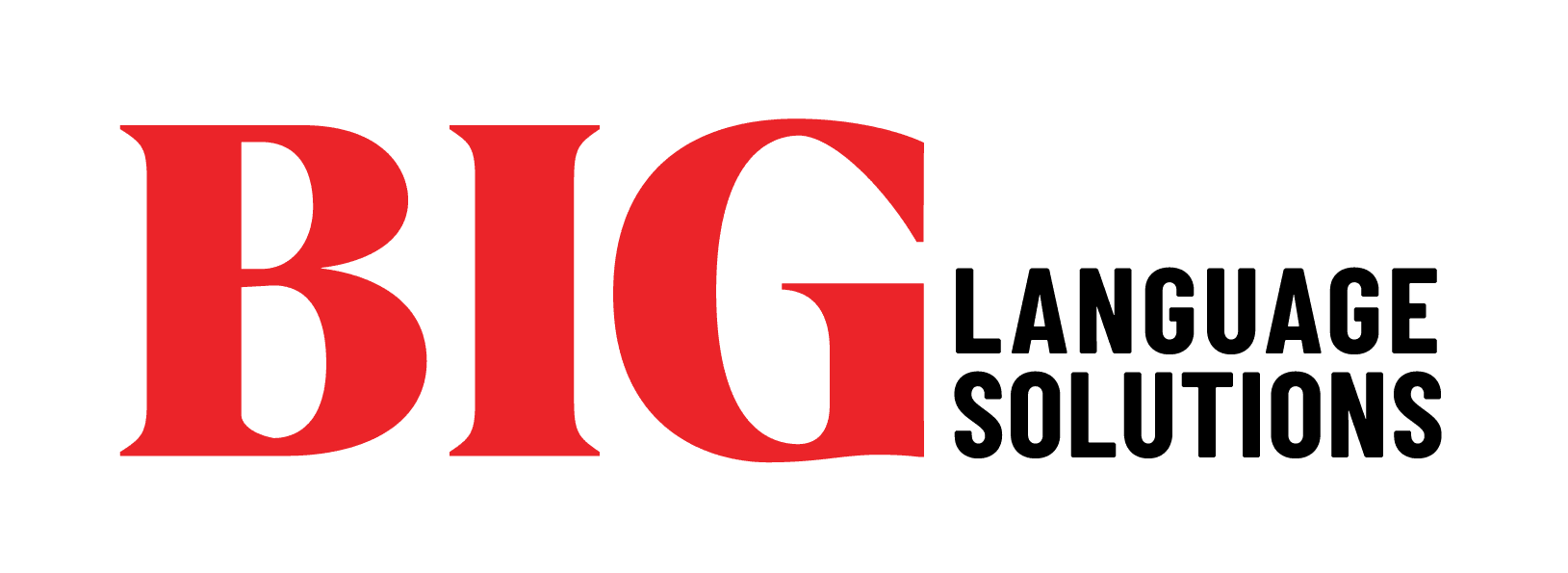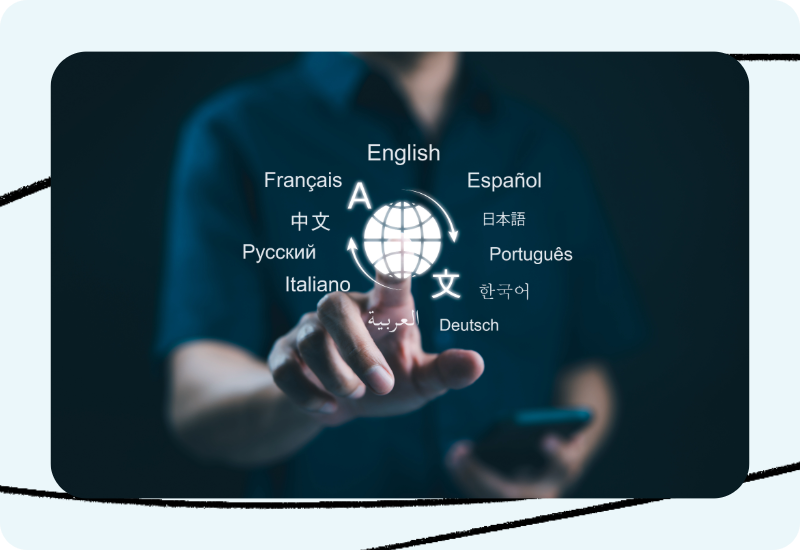Translation isn’t a mechanical task but rather a way to adapt concepts for another culture.
Treating language like a word-for-word conversion misses the entire point. Language carries identity, shared experience, preferences, and deeply ingrained social norms. If you fail to account for this in a translation, you risk saying something you never intended. Getting translation right means focusing on how your message is received, not just how you convert the words from one language to another.
What’s the key? Cultural intelligence. Without it, connecting with a global audience becomes guesswork.
This is of critical importance in branded materials like websites, landing pages, ads, and marketing campaigns. Let’s take a look at how it works.
Cultural Intelligence Means Understanding Cultural Nuance
Cultural intelligence in translation is the understanding of the context behind the words: how people behave, what they expect, and the unspoken rules that shape communication. Applying it means going beyond the literal meaning so that you can both convey the message and influence how a specific audience perceives it.
In other words, it’s the difference between sounding persuasive and accidentally sounding aggressive. Between a clever headline and a confusing one. Between building trust and losing it.
Getting a handle on cultural nuance helps your brand align with the market. If you do this well, cultural nuance gets built into your translation process, which directly supports your go-to-market efforts by:
- Making your messaging feel familiar and relevant.
- Avoiding embarrassing or offensive missteps.
- Increasing engagement, trust, and conversion.
- Making your message land and stick.
Why Only a Professional Translator Can Bring the Cultural Expertise
The challenge with cross-cultural communication is that you can get every word technically correct and still send the wrong message.
That’s why it’s not enough to hire someone who speaks the language. You need people who understand the local culture, including its humor, sensitivities, taboos, and everyday context. A professional translation will be bilingual AND bicultural, and this is what it takes to understand cultural nuances.
Also, be mindful of where they are from in cases where a language has multiple dialects and is spoken in multiple locations. Language lives differently in different places, even when it’s technically the same. Take Spanish, which is the official language in 26 countries or territories. A Spanish/English bilingual may be able to translate text accurately, but that doesn’t necessarily mean they can localize content for a Mexican audience specifically.
Taking it a Step Further: Localization
Localization is translation plus adaptation of the “stuff beyond the words” to make sure your content lands in target markets. You will also hear the term transcreation, which refers to a creative adaptation of source content for a new locale, going well beyond creating a faithful language translation.
Let’s see what it looks like in practice:
- Recrafting content: You rewrite jokes, metaphors, idioms, and pop culture references so they resonate with local values and humor.
- Tone matching: You adjust your brand voice to meet local expectations, ensuring it doesn’t come across as too casual or too formal for the audience.
- Visual choices: You choose imagery, colors, and symbols that reflect the local reality.
- Product naming and taglines: You test product names, slogans, and campaign ideas to cut out unintended meanings in different languages or dialects.
Mistakes to Learn From
Here’s a great example of a mistake made when expanding into a language and culture with an entirely different set of social cues: Dolce & Gabbana’s 2018 campaign in China. The fashion house released a video of a Chinese woman struggling to eat Italian food with chopsticks, while a male voice instructed her like a child. It wasn’t quirky; it was culturally insensitive. And the backlash was immediate: boycotts, celebrity outrage, and government criticism.
This could have been avoided by involving someone with local cultural insight and asking clear questions about potential local perceptions of imagery and approach.
Luckily, not every translation pitfall makes international headlines. In 2024, the Football Association of Ireland published a matchday program in which Latvian player names appeared as bizarre English phrases, like “Robert the Liar.” The issue was embarrassing, but minor. The program was pulled, an apology was issued, and the matter faded.
A similar “technical error” appeared on US Congresswoman Alexandria Ocasio-Cortez’s campaign leaflet, designed for Arabic-speaking voters. The intention was positive, but the text was reversed, disjointed, and unreadable. A native speaker could have corrected these errors before they reached the public.
The Solution: Translate with Creativity, Not Just Accuracy
With social media turning every misstep into a potential viral crisis, getting translations right in new markets is more important than ever. Here we share our top tips to help you get your first impression right.
-
Bring in Local Experts
While it may not be practical to have a native translator or transcreator involved in every piece of content, this level of professional is essential at key milestones or for key content pieces, such as product names, slogans, advertising campaigns, in-app messaging, or customer support scripts. These are moments that define your brand experience in a new market, and missteps here can influence your long-term success.
At this level, accuracy isn’t enough. You need a translator who can assess tone and intent. Are you too informal? Too corporate? Too forceful? An expert will recognize how your message may land and help you adjust before it goes live.
To make sure of overall consistency and efficiency in your content, invest in long-term partnerships with translators. This allows them to deeply learn your brand voice and values, reducing onboarding time and increasing the quality of your localized content.
2. Write Thorough Translation Briefs
This document, a set of detailed instructions for the translator, sets the foundation for quality work because it provides the context needed to help a linguist make sure your message lands as intended. At a minimum, you’ll want to include the purpose of the content, the tone you’re aiming for, and your target audience’s demographics, behaviors, and expectations. Cultural clarifications and insights should be explicit in every brief.
Just as importantly, clarify what your brand is not: for example, not sarcastic, not overly corporate, not excessively casual. Include mention of any cultural references to avoid.
3. Create a Style Guide and a Glossary
A translation style guide outlines a brand’s rules and preferences to ensure consistency, clarity, and brand alignment across all translated content. It includes tone of voice, formality levels (e.g., formal vs. casual), preferred terminology to use, terminology to NOT use, grammar and punctuation rules, region-specific spelling (e.g., UK vs. US English), and guidance on formatting, dates, numbers, and units. It may also specify what not to translate (e.g., product names or trademarks) and include examples of correct vs. incorrect usage.
Style guides reduce ambiguity for translators, speed up the review process, and help maintain a consistent brand experience across languages and markets. Without one, translations can vary by translator or region, causing confusion or mistrust among readers. A well-defined style guide supports quality control, protects brand identity, and makes scaling into new markets faster and more efficient. It’s especially critical in regulated or technical industries where clarity and consistency are essential.
4. Plan for Quality Control and Feedback Loops
Before you hit publish, create a layer of cultural QA. It can include:
- Beta testing copy with local users or staff
- Peer reviews by other translators in the same region
- Time for rewrites, not just proofreading
- A feedback loop after launch to gather data on what’s working and make updates if necessary
5. Use AI Thoughtfully
AI can be a powerful tool for accelerating translation, particularly when generating early drafts, handling a high volume of content, or handling low-resource languages. However, it should never be the final step.
The critical problem? AI doesn’t inherently understand cultural nuance. It isn’t human and has no lived experience of a culture. So, to get better results, you need to guide it with well-crafted prompts that include explanations of the appropriate tone to use, sensitivities to be aware of, and market-specific positioning.
We recommend using AI only for lower-stakes content such as blog posts, FAQs, reviews, user-generated content, and some service content.
Always review AI-translated content before it goes live, particularly if it’s customer-facing. Human insight will make your message feel authentic, respectful, and aligned with the audience you’re trying to reach.
Your Path to Culturally Aligned Content
Translation isn’t a technical task but a cultural process and so your attention to cultural nuance will help your translations ‘work’ in another culture. This customization will build trust with your new market; the alternative-making mistakes that offend or misalign-will damage trust. Taking your translations a step further shows your audience that you respect their way of life.
That’s why all our translators and localization specialists are native to the regions they work in. They understand the language, yes—but just as importantly, they understand the people.
Get in touch to learn how we can help you localize with purpose and impact.





